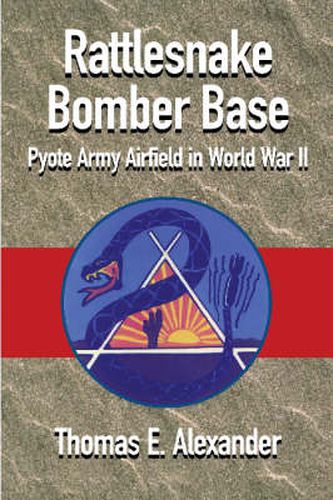Readings Newsletter
Become a Readings Member to make your shopping experience even easier.
Sign in or sign up for free!
You’re not far away from qualifying for FREE standard shipping within Australia
You’ve qualified for FREE standard shipping within Australia
The cart is loading…






This title is printed to order. This book may have been self-published. If so, we cannot guarantee the quality of the content. In the main most books will have gone through the editing process however some may not. We therefore suggest that you be aware of this before ordering this book. If in doubt check either the author or publisher’s details as we are unable to accept any returns unless they are faulty. Please contact us if you have any questions.
In a remote corner of West Texas in 1942, the dreaded western diamondback rattlesnake, was awarded the unique distinction of having a mighty airfield named in his honor. Although the installation originally bore the official title of Pyote Army Airfield, the massive quantity of serpents encountered during the construction of the base quickly earned it the nickname of
The Rattlesnake Bomber Base.
For the thousands of military men and women who served on the airfield and the additional thousands of civilians who worked there, what is now only a ghostly ruin will always be a vibrant and undying monument to a brief time when men and snakes and giant silvery bombers all came together on the West Texas desert to share a legendary chapter of American history. This book tells the story of what happened when an American bomber base aptly named for a serpent arose, Brigadoon-like, from the sun-baked caliche desert located just east of the fabled Pecos River and just west of nearly every place else. Although the huge airfield was eventually to sprawl over nearly three thousand acres of Texas hardscrabble, its important and colorful history should by no means be considered merely a regional wartime episode. What happed at Pyote, Texas, before, during, and after World War II represents instead a microcosm of what took place all across the North American continent.
$9.00 standard shipping within Australia
FREE standard shipping within Australia for orders over $100.00
Express & International shipping calculated at checkout
This title is printed to order. This book may have been self-published. If so, we cannot guarantee the quality of the content. In the main most books will have gone through the editing process however some may not. We therefore suggest that you be aware of this before ordering this book. If in doubt check either the author or publisher’s details as we are unable to accept any returns unless they are faulty. Please contact us if you have any questions.
In a remote corner of West Texas in 1942, the dreaded western diamondback rattlesnake, was awarded the unique distinction of having a mighty airfield named in his honor. Although the installation originally bore the official title of Pyote Army Airfield, the massive quantity of serpents encountered during the construction of the base quickly earned it the nickname of
The Rattlesnake Bomber Base.
For the thousands of military men and women who served on the airfield and the additional thousands of civilians who worked there, what is now only a ghostly ruin will always be a vibrant and undying monument to a brief time when men and snakes and giant silvery bombers all came together on the West Texas desert to share a legendary chapter of American history. This book tells the story of what happened when an American bomber base aptly named for a serpent arose, Brigadoon-like, from the sun-baked caliche desert located just east of the fabled Pecos River and just west of nearly every place else. Although the huge airfield was eventually to sprawl over nearly three thousand acres of Texas hardscrabble, its important and colorful history should by no means be considered merely a regional wartime episode. What happed at Pyote, Texas, before, during, and after World War II represents instead a microcosm of what took place all across the North American continent.